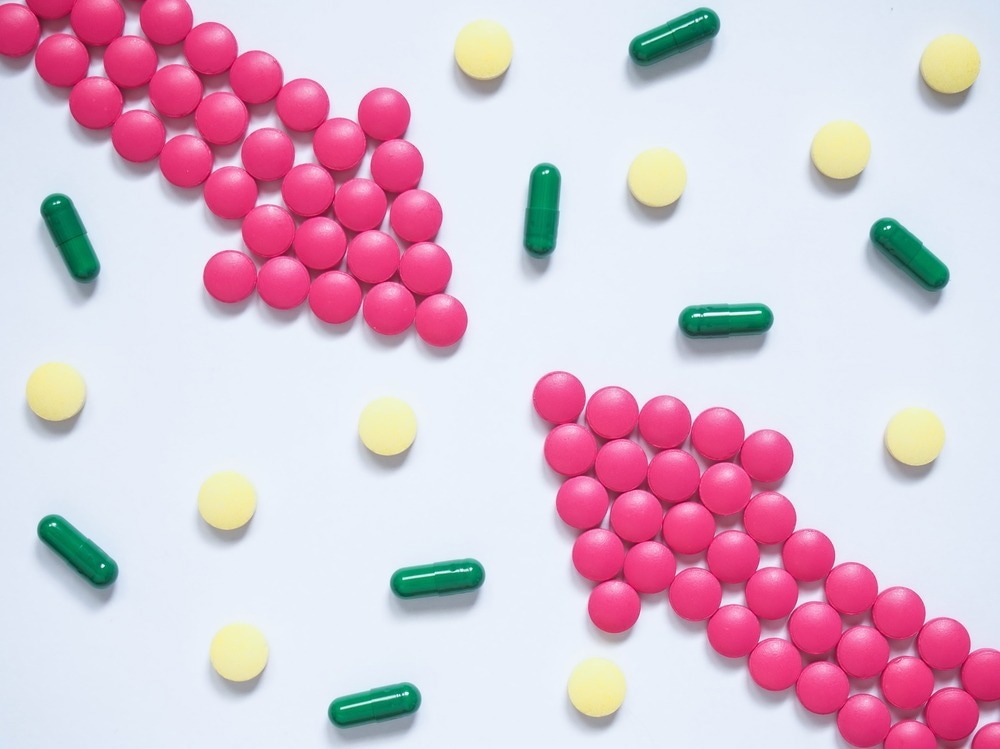The pharmacokinetics of a drug is one of the main influencers of the therapeutic efficacy of a drug. Pharmacokinetics determine how much of the drug is delivered to the body and the site of action, and for how long they work. This then determines whether a medication is viable and therapeutically effective long enough. Therefore, optimizing a drug's pharmacokinetics is essential to drug formulation. This article will focus on the methods used to optimize pharmacokinetics.

Image Credit: Orawan Pattarawimonchai/Shutterstock.com
What are the stages of pharmacokinetics and their influencers?
Pharmacokinetics is the movement of a drug into, through, and out of the body. This is classified into 4 phases abbreviated to ADME. ADME stands for absorption, distribution, metabolism, and excretion/elimination.
- Absorption of the drug from the administration site into the bloodstream is the first stage of drug delivery and often the most difficult to achieve in an effective quantity. The administration route (oral, inhalation, topical, etc.) is important as it determines the barriers the drug has to cross before reaching the bloodstream. The intravenous route is an exception in which the drug is delivered directly into the bloodstream; therefore, the bioavailability is 100%. In other routes, such as oral, the drug has to pass many barriers, such as the gut wall or first-pass metabolism. The amount of drug absorbed is therefore influenced by the formulation and physiochemical properties of the drug.
- Distribution refers to how the drug moves from the absorption site around the body and tissue to the site of action it is needed. The drug's physicochemical properties and the site of action influence this. If a drug is required to cross the blood-brain barrier, the properties of the drug will have to be adjusted accordingly to ensure it is lipophilic and has a small molecular weight.
- Metabolism generally renders a drug inactive by transforming it into inactive metabolites. Cytochrome P450 enzymes are responsible for the biotransformations of about 70-80% of drugs. Factors that influence this is age, gender, and drug interactions.
- The excretion of a drug into urine is an important mechanism of drug removal from the body and, to a small extent, the bile. Factors that influence this are age, renal dysfunctions, and conditions that impact the kidneys.
The above stages indicate that optimizing a drug's pharmacokinetics mainly depends on improving the absorption of a drug and its distribution to the site of action. Patient-specific factors mainly influence metabolism and excretion. For absorption to occur, the drug has to be soluble and permeable; this is the basis of the Biopharmaceutical Classification System (BCS). The BCS was designed to classify drugs concerning their permeability and solubility into four classes:
- Class I - high permeability, high solubility
- Class II - high permeability, low solubility
- Class III - low permeability, high solubility
- Class IV - low permeability, low solubility
A drug has to be soluble in bodily fluids as only then can it be absorbed; this would require the drug to have hydrophilic properties. A drug would then have to be permeable to permeate biological membrane barriers such as the intestinal wall; this would then require a drug to be lipophilic, as those barriers are mainly composed of lipids. Therefore, has to be a balance between lipophilicity and hydrophilicity and utilizing other methods to increase permeability and solubility.

Image Credit: PopTika/Shutterstock.com
Physical Modification
Reducing the particle size of the drug is one of the oldest methods to increase absorption, as it makes the drug more soluble. Smaller particle size results in a larger surface area for solubilization. This is also one of the main reasons why nano-sized particles are being studied for drug delivery.
Modifying the crystal habit of a drug can also influence the solubility and, therefore, the absorption of the drug. The crystal size and the number of faces exposed to the solubility medium influence solubility. Methods used include conversion into amorphous form; amorphous forms are no-crystalline forms that don't have a long-range order. They might have higher solubility but can be physically unstable depending on the thermodynamic energy state.
An alternate method of modifying a crystal habit is creating co-crystals; these are crystals formed from at least two different molecular components in a defined stoichiometric ratio. Co-crystals are effective in drugs that have low solubility or low permeability. The modified molecular arrangement of the crystal and the ability to choose a co-former with desired characteristics makes this option a valuable tool in the formulation of drugs.
Chemical Modification
The two main methods of chemical modification are derivitization and salt formation.
Derivatization is the synthesis of a drug's different derivatives to improve its pharmacokinetics. This involves rational drug design and changing functional groups or adding conjugates to improve bioavailability. Creating prodrugs is another form of derivatization based on creating an inactive molecule that later becomes active via the loss of functional moieties. The prodrug form is usually easier to deliver to the body and more stable; this is therefore used to enhance the pharmacokinetics of a drug.
Salt formation is another common method to optimize pharmacokinetics; salts are more soluble as the dissociated form of a drug is ionized and therefore dissolves. For example, a basic compound formulated as salt is ionized in the stomach acid, making it soluble, but in the basic environment of the intestine, it is unionized, meaning that it is permeable and can penetrate the lipophilic membranes of the intestines. The salt formation allows it to navigate various biological barriers.
There are many methods to optimize the pharmacokinetics of a drug by using carrier technologies such as self-emulsifying drug delivery systems, complexes, micelles, nanoparticles, and more. This article reviewed the influencers of pharmacokinetics, the basic principles to optimize pharmacokinetics, and common methods utilized.
Sources:
- Dahan, A., & Miller, J. M. (2012). The solubility-permeability interplay and its implications in formulation design and development for poorly soluble drugs. The AAPS journal, 14(2), 244–251. https://doi.org/10.1208/s12248-012-9337-6
- Genomind. (2021). Introduction to pharmacokinetics: Four steps in a drug's journey through the body. Genomind. The Science Behind Better. https://genomind.com/providers/introduction-to-pharmacokinetics-four-steps-in-a-drugs-journey-through-the-body/
- Ngilirabanga JB, Samsodien H. (2021). Pharmaceutical co-crystal: An alternative strategy for enhanced physicochemical properties and drug synergy. Nano Select. 2(3):512-526. https://doi.org/10.1002/nano.202000201
- Thapa, R.K., Choi, HG., Kim, J.O. et al. (2017). Analysis and optimization of drug solubility to improve pharmacokinetics. Journal of Pharmaceutical Investigation 47, 95–110. https://doi.org/10.1007/s40005-016-0299-z
Further Reading